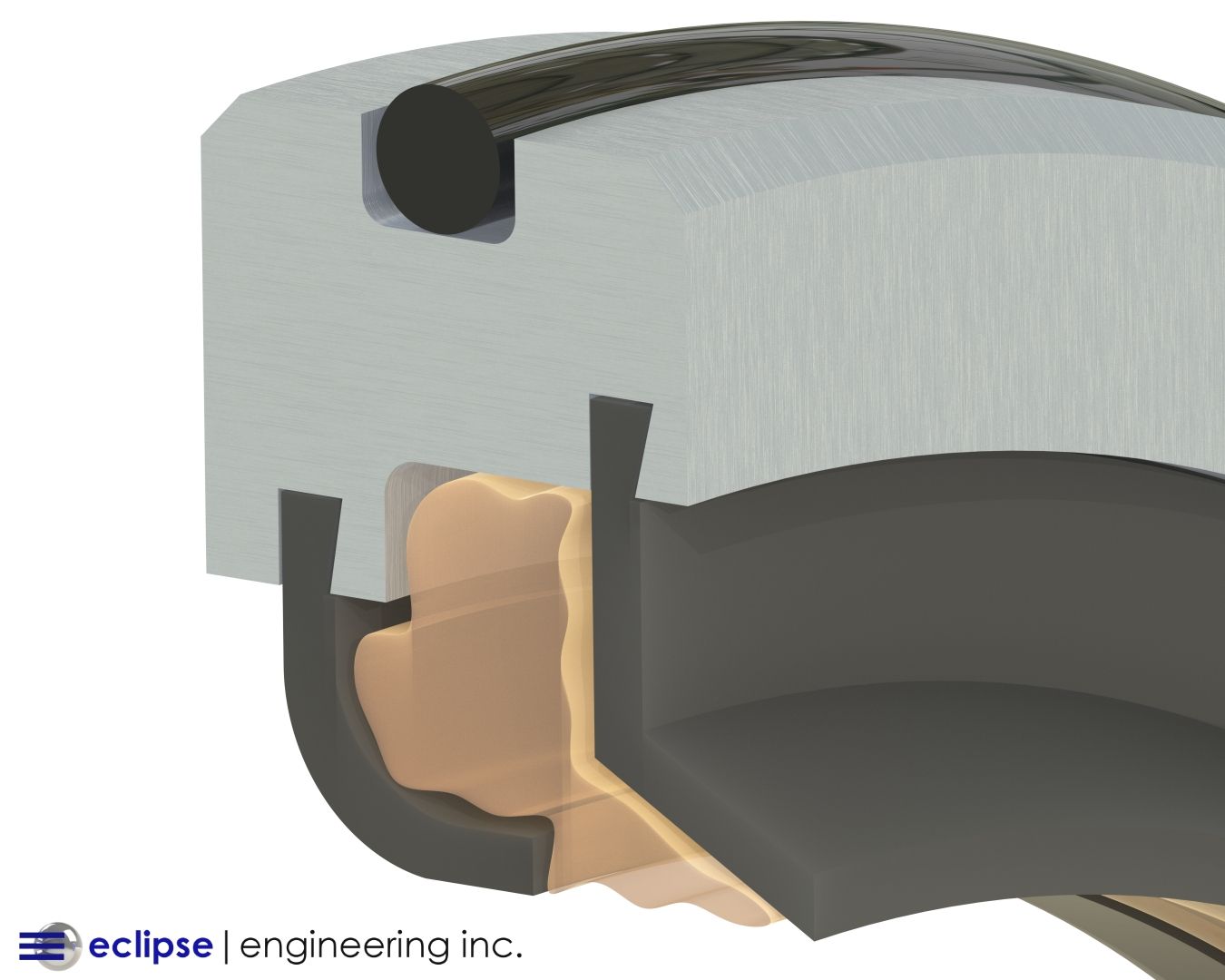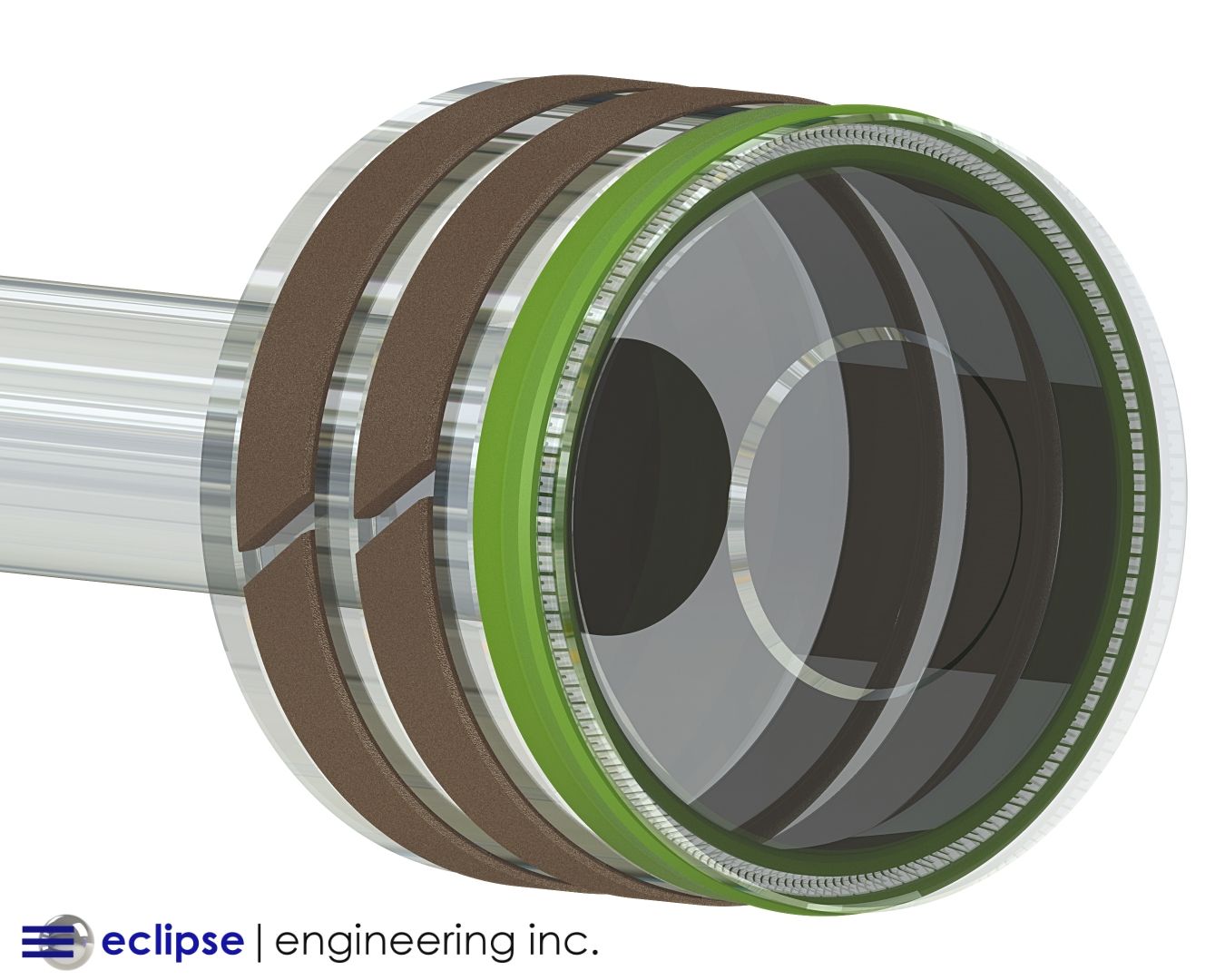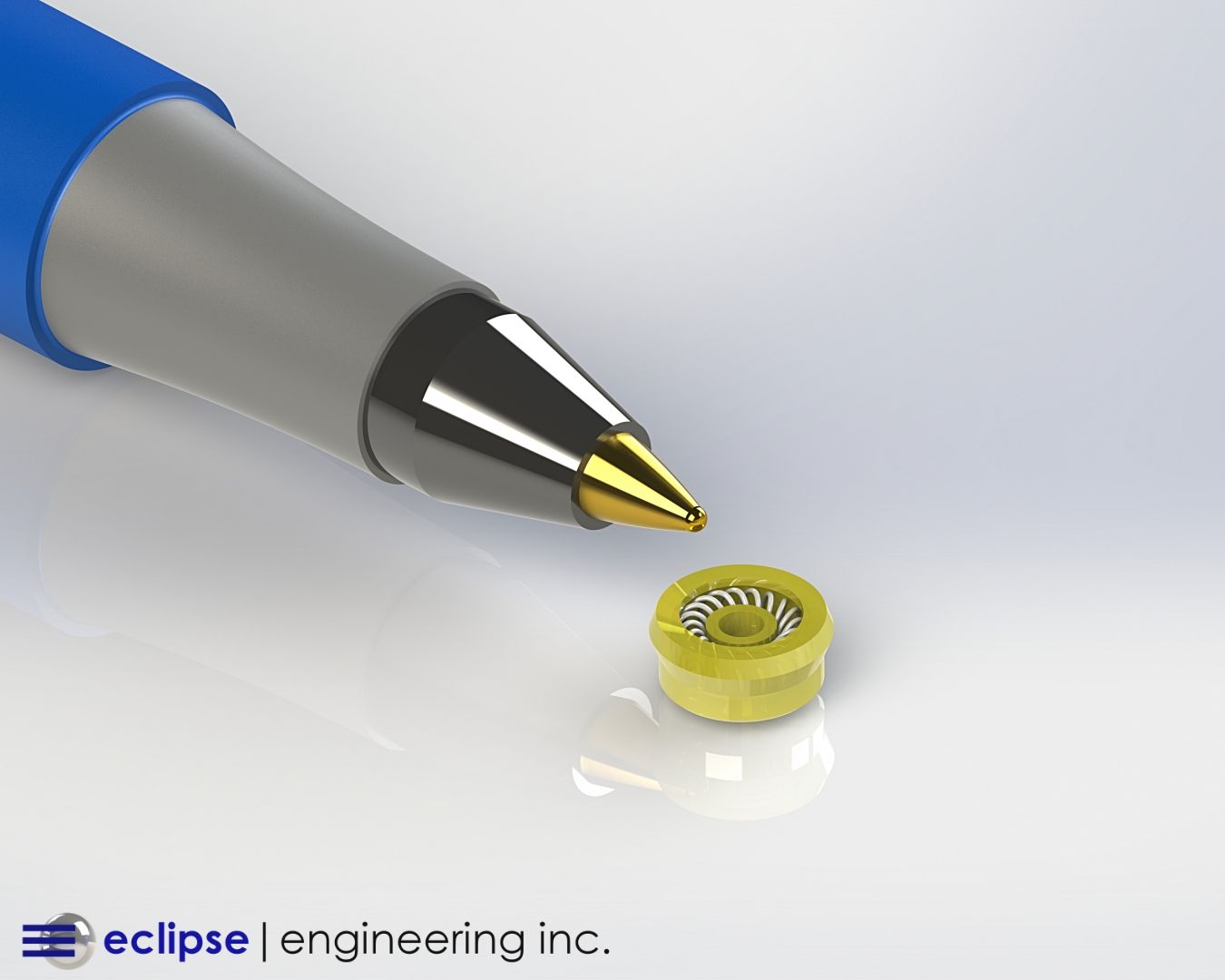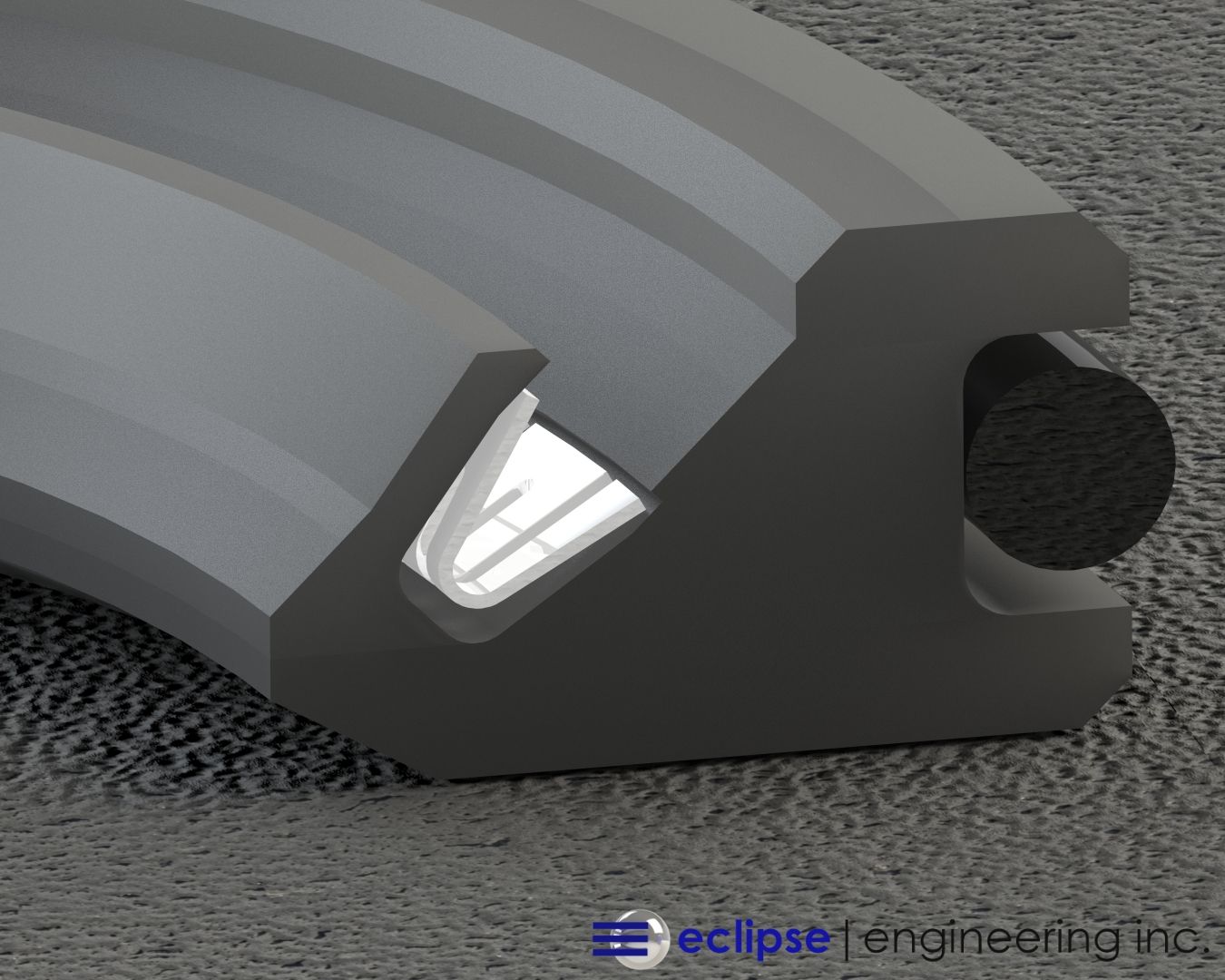Case Study: Custom PTFE Tri-Clamp Gaskets Keeping the (Good) Beer Brewing

It’s no secret the craft beer industry has exploded in the past decade across the country. The number of microbreweries in the United States has more than tripled since 2012. Sales of craft beer topped $28 Billion in 2023 nationwide, making it big business for many state’s economies. Eclipse’s home state of Colorado has been at the forefront of the brewery wave, ranking fourth in the country for number of craft breweries at over 450.
Healthy demand for new and exciting beer types has found many small, niche breweries scrambling to produce enough beer to satisfy the market. Breweries starting in mere garages find themselves expanding to fill entire warehouses and previously occupied manufacturing facilities. The need for larger and higher scale brewery production equipment has therefore increased accordingly. Of course, beer production is dependent on seals not only for leakage control, but also product quality and consistency.
Keeping it Clean
The beer brewing process requires the raw dry ingredients/water to be transferred several times from vessel to vessel at varying stages of the procedure. In a larger-scale brewery, the raw ingredients (and subsequent beer) might be transferred into five or six separate tanks from the beginning of the operation to end. In addition, there also might be cooling steps through heat exchangers and filtering procedures.
Transferring the raw ingredients and/or beer is done through pipelines or specialty hoses. The most common connection type for the hose or piping is a flanged Tri-Clamp fitting. This type of connection, sometimes called a sanitary clamp, is widely used in the food/beverage industry, as well as in biotech and pharmaceuticals. It facilitates a relatively easy, often tool-free, connection and disconnection while still providing good sealing force. The clamp utilizes a gasket in the connection which are usually referred to as sanitary gaskets.
They can be made of various rubber and elastomeric compounds, as well as PTFE. A PTFE gasket is often used in high temperature areas of the equipment, such as near burners or heating elements.

While it’s obvious, leak-free connections are desired in the brewing process, keeping the beer in is as important as keeping contamination out. Cleanliness is very important in the brewing method as any unwanted bacteria introduced at any point in the process can spoil an entire batch of beer.
Unlike Sour or Farmhouse beers where the use of wild yeast is purposely introduced and controlled to produce a desired level of funkiness, bacteria due to unclean vessels or leaking seals can cause a rancid or foul batch. Out of control fermentation can also take place depending on the stage of introduction.
While a small brewery can pass off a few barrels of a funky batch as an experimental brew in their tap room, a brewery in a high volume canning and distribution arrangement will have expected standards of quality and consistency. One unsavory can or bottle can potentially harm the image and brand of an entire brewery.
The need for effective and properly functioning seals throughout the brewery process therefore becomes increasingly important. As production volumes steadily climb the potential for issues also multiples.
The Customer’s Issue
Eclipse was approached by a local brewer undergoing an expansion and looking to utilize some very old, almost historic, brewing equipment. While the vessels and tanks were all usable and totally functional, a major problem came about when they attempted to change the seals. Most of the hose and pipe connections, while a familiar Tri-Clamp style of connection, were very odd sizes. The equipment was made in Europe well before any type of standard seal/gasket connections where designated.
A typical Tri-Clamp gasket today is considered a commodity item and can be found on-the-shelf from many vendors, even in PTFE. Most are very limited in available sizes and typically only include inch nominal selections. The customer’s hardware was based off non-standard, metric sizing so finding an off-the-shelf gasket was not going to be possible. To make matters worse, many of the connection flanges were heavily worn from years of use, making sizing of the gaskets even more of a challenge. Unlike a rubber O-Ring, where it might be possible to stretch or compress a standard size to fit, a PTFE seal must be properly sized to work.
The customer faced a dilemma. Re-tooling every connection to use standard size gaskets (which would involve welding of new flanges at every hard connection point) would likely offset any cost savings the customer gained by utilizing the old equipment. They would probably be better off just buying a completely new brewing system and tanks if the proper gaskets couldn’t be found.
Fortunately, Eclipse had a design, manufacturing and service solution to the customer’s problem.
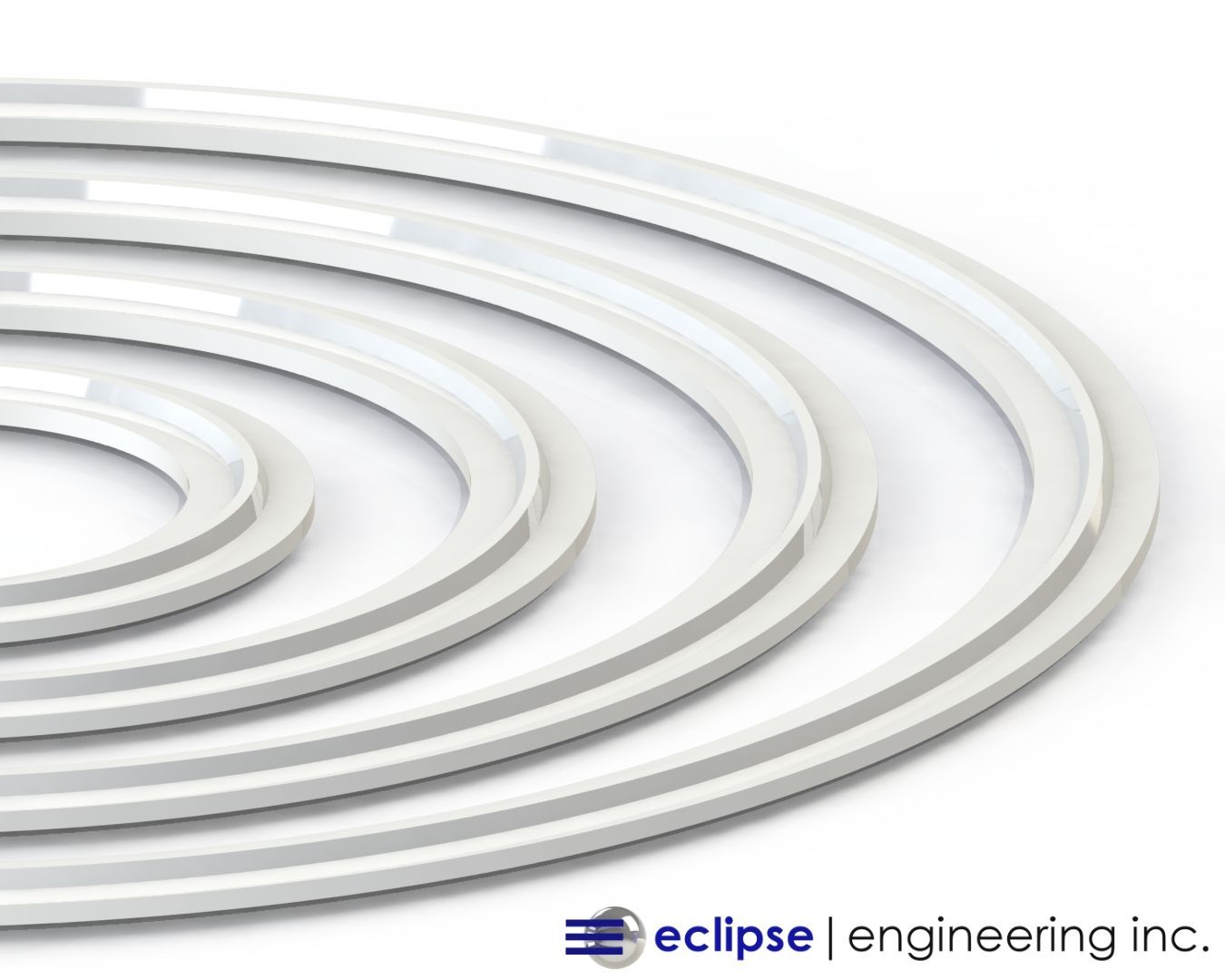
The Eclipse Solution
Eclipse is quite regularly tasked with reverse engineering seals for customers in similar situations. Often, a used seal is the only thing that can be provided, and Eclipse is up for the challenge of making a fully functioning seal with that limited information.
The customer supplied Eclipse with the original, used and worn seals to measure and reverse engineer. There would obviously be no engineering drawings of the hardware to review. Eclipse’s very knowledgeable, technical sales staff was able to assist the customer in measuring the accessible hardware at their facility. Their expertise in sealing systems and knowing the critical dimensions for sealing success, helped Eclipse gather as much information as possible about the application. Though highly precise measurements are typically not possible in the field, any information on seal gland dimensions will aid in the reverse engineering of the system.
Unfortunately, not all aspects of the hardware were practical to measure. So simply designing a new seal or gasket around a set of dimensions would not be possible. Eclipse’s engineering staff would need to examine the used original seals to determine the missing pieces of the puzzle.
Eclipse possesses a wide range of measurement and inspection equipment. From comparators to micrometers and depth gages to our advanced, highly precise Visual Measurement Machine. But simply measuring and duplicating the heavily worn seals would not necessarily spell success.
This is where Eclipse’s many years of seal experience comes into play. While measurements of the existing seals provide value information, understanding the functionality and design intent of the seal is critical for the ultimate success of the system. Knowing what dimensions will be key and the behavior of the seal material play an essential role in final sealing fitment and performance.
Eclipse combined all the available information together with its proficiency in seal design to produce new seals for some very old equipment.
How it Performed
The customer was thrilled that Eclipse was able to retrofit new seals into their hardware. Eclipse’s custom designed and manufactured seals proved to fit perfectly.
The equipment was bought online leak free in all the connections. The customer was also very pleased in Eclipse’s level of personalized, knowledgeable service and timely response of the technical sales team.
Eclipse’s prompt lead-time from its in-house manufacturing gives the customer a reliable source for quality PTFE seals and gaskets for years to come.
Contact our team to learn more about how we can assist you >
